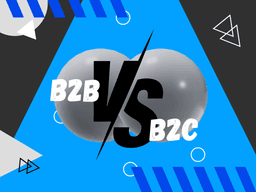/ Marketing Mix & The 7 P’s Of Marketing
Marketing Mix & The 7 P’s Of Marketing

In the wide world of marketing, the traditional and classic marketing mix, originally conceptualized by Professor James Culliton of Harvard University and further refined by Jerome McCarthy, has been a cornerstone for more than seven decades. What started as the fundamental quartet of Product, Price, Placement and Promotion in 1948 has, over time, metamorphosed into the more comprehensive 7Ps of marketing, which incorporates important aspects such as People, Packaging, and Process. In this exploration, we invite you to delve into the ins and outs of this dynamic concept, break down its components, and offer nuanced insights into its practical application in the ever-evolving marketing landscape.
Uncovering the Marketing Mix: A Holistic Approach
A marketing mix, at its core, represents a carefully selected set of marketing tools, strategically combined to form a comprehensive and effective marketing plan. Evolving from the 4Ps – Product, Price, Placement and Promotion – the contemporary marketing mix now includes a broader framework that includes People, Packaging and Process. ).
Evolution towards Transformative 7Ps
Jerome McCarthy's work in "Basic Marketing: A Managerial Approach" marks the transformative journey of the marketing mix, expanding its dimensions to include People, Packaging, and Process. This transformation encapsulates a synergy of carefully designed strategies and practices, forming the foundation for successful product promotion and overall business success.
Navigating the Seven Elements of the Marketing Mix: A Strategic Odyssey
Product
Dive deeper into the ins and outs of your offer. Beyond traditional considerations of design, quality, features and packaging, adopt a ‘product-based marketing' approach, allowing a product or service to stand out on its own merits.
Price
Craft a pricing strategy that aligns with your overarching goals. Whether that involves positioning your product as a premium offering, emphasizing competitive pricing, or creating value through promotions, the truth is, thoughtful pricing considerations are critical.
Promotion
Engage in promotional channels, from traditional channels such as television and print media to the digital realm of social media, content marketing and email campaigns. Seamlessly incorporate these channels into your marketing strategy for a more cohesive customer experience.
Placement
Strategically determine where your product can be accessed, considering both physical and digital realms. Consider consumer behavior and preferences as you map out your placement strategy.
People
Acknowledge the huge impact each individual associated with your brand has on the customer experience. Prioritizing skills development, cultivating a strong company culture, and building genuine relationships with customers can be considerations you should consider in your marketing efforts.
Packaging
Take advantage of packaging as a powerful tool to attract attention and strengthen brand value. Beyond aesthetics, consider how design elements can differentiate your brand, provide valuable information, and add extra value to customer interactions.
Process
Improve customer experience through streamlined processes. Optimize logistics, scheduling, and delivery to ensure operational efficiency, freeing your team to focus on delivering exceptional customer experiences.
As we navigate the complexities of the marketing mix and the 7Ps, it's clear that this framework is not just a static principle but a dynamic guide that evolves as the business landscape and consumer behavior change. Integrating these elements into your marketing essence is more than just a checklist; it is a strategy for creating a unified brand experience. Understand how each element relates, consider how pricing strategy impacts promotional efforts, how product specifications impact pricing decisions, and how your team's execution of processes shapes the overall customer journey. With these, you find your way to the creation of a comprehensive marketing plan that not only suits your target audience but also leaves a mark on the dynamic and ever-evolving world of marketing.
















